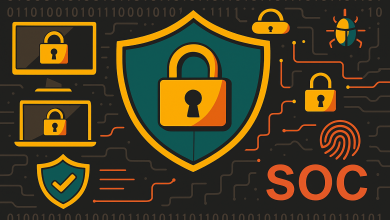
Artificial Intelligence (AI)-powered cyber threats are fast becoming one of the top security challenges facing organizations. Threat actors are continuously exploring more efficient tactics to exploit their victims’ systems and data. This is a risk that is expected to increase rapidly as AI tools become more accurate and accessible.
AI is evolving cyber threats across the board, from ransomware and phishing to botnet attacks. Dealing with these attacks is a growing challenge for organizations and their security teams, with the National Cyber Security Centre (NCSC) reporting that AI will almost certainly increase the volume and heighten the impact of cyberattacks over the next two years.
These attacks involve using advanced machine learning (ML) algorithms to identify vulnerabilities, predict patterns, and exploit weaknesses. In response, traditional cybersecurity methods need to evolve to keep pace with sophisticated AI cyberattacks that adapt in real-time.
Organizations must build awareness of best practices and implement advanced cybersecurity solutions capable of predicting, detecting, and responding to attacks with the same agility and sophistication as the threats they face.
Escalating AI Threats
The escalating threat of AI poses diverse and complex challenges across the cybersecurity landscape.
As the sophistication of AI-generated cyberattacks grows, so will the potential consequences for organizations, governments, and individuals. The impact of these advanced threats goes beyond immediate financial losses or service interruptions, with far-reaching consequences that could harm many sectors of our society.
Threat actors are leveraging AI to launch a range of attacks including:
- AI Botnet Attacks – These attacks deploy networks of AI-controlled, infected devices to launch and coordinate cyberattacks. A successful AI botnet assault can have significant ramifications for organizations. This includes disruption to critical services, revealing sensitive data, and causing long-term reputational and financial damage.
- AI-Powered Phishing Attacks – According to Statista, nearly half of the global business and cyber leaders highlighted the advance of adversarial capabilities, such as phishing, as their greatest concern regarding the impact of generative AI on cybersecurity. AI’s development with ML means language learning models can produce realistic text to a standard often undetected by the human eye. As a result, the risk of fraudulent phishing emails to gain access to sensitive data or to install malware on the victim’s device increases.
- AI Ransomware Attacks – AI is expected to increase global ransomware threats over the next two years based on a report from the NCSC. It predicts that AI will lower the barrier to entry for new cybercriminals as they leverage enhanced information-gathering tools to improve targeting. The speed, scale, and effectiveness in which these threat actors can now work is ramping up with the developments in AI.
- Automated Cyberattacks – Advanced algorithms can analyze huge quantities of data to find targets for attacks. The algorithms work by scanning the internet for vulnerable systems and finding weaknesses in software or network configurations. Ultimately, this increases the possibility of exploitable vulnerabilities being discovered to cause widespread damage.
AI-generated attacks have the potential to disrupt organizations across all industries, including the financial sector, the healthcare industry, and national security. As AI evolves, cybersecurity tactics must also evolve at the same pace.
Overcoming Intelligent Attacks
Staying ahead of AI-powered attacks requires organizations to implement a proactive strategy that encompasses an effective security solution alongside industry best practices.
Best practice in cybersecurity consists of regularly updating and installing new software when it becomes available as well as performing regular data backups. Carrying out frequent cybersecurity audits and practicing good password hygiene also contribute to establishing a stronger cybersecurity posture. At the same time, organizations should deliver continuous cybersecurity training to ensure all employees remain informed about emerging AI threats.
On top of this, deploying a suitable cloud-native SIEM (Security Information and Event Management) platform is an ideal solution for organizations that are overstretched by the ever-changing threat landscape. It enables organizations to benefit from:
- Real-time Analysis and Correlation – Cloud-native SIEM solutions serve as a crucial line of defense against escalating AI-powered cyber threats. The platform can analyze and correlate security data as it’s generated, offering immediate insights into potential threats. Continuous monitoring across the digital landscape allows for the swift identification of suspicious activity that could be indicative of an AI-powered cyberattack.
- Integration and Collaboration – Cloud-native SIEMs are typically designed around open standards, meaning they can seamlessly integrate with a variety of security tools and data sources that organizations may use. This helps in creating a collaborative defense system that is better equipped to deal with evolving AI threat tactics by enhancing the speed and efficiency in responding to incidents.
- Scalability and Rapid Deployment – A cloud-native SIEM platform can provide a scalable and adaptable way to manage security infrastructure due to its cloud-based architecture. Organizations using a cloud SIEM solution can easily adjust or handle large volumes of logs without delays. This agility is crucial in keeping pace with AI-driven cyber threats.
- Cost-Effectiveness – As cloud-native SIEMs are hosted in the cloud, they can reduce the costs incurred by organizations to update systems. With this model, the service provider handles the infrastructure maintenance, software updates, and security patches. This ensures cybersecurity models are always up to date, keeping organizations a step ahead whilst also ensuring cost-efficiency.
- Reduced Pressure for Cybersecurity Teams – Additionally, cloud-based SIEMs can alleviate the pressures on cybersecurity teams, who may lack the necessary resources to handle advanced AI threats. A cloud-native SIEM platform allows security teams to focus on strategic responses rather than the intricacies of detecting threats. It allows analysts to automate routine tasks to free up team members. This is achieved without overburdening staff with new tools and training, which can be time-consuming and lead to employee burnout.
Safeguarding Against Future Threats
As technology evolves, AI-powered attacks will intensify in their sophistication. To effectively address these threats, organizations must prioritize bolstering their threat detection capabilities and enhancing the mitigation process to reduce the severity of any instances.
Implementing a proactive strategy will be crucial to safeguard data, preserve trust, and ensure resilience against increasingly complex AI-driven cyberthreats. By arming themselves with the right processes and security solutions, organizations can better navigate the challenges of today’s cybersecurity landscape and protect themselves in the future.



